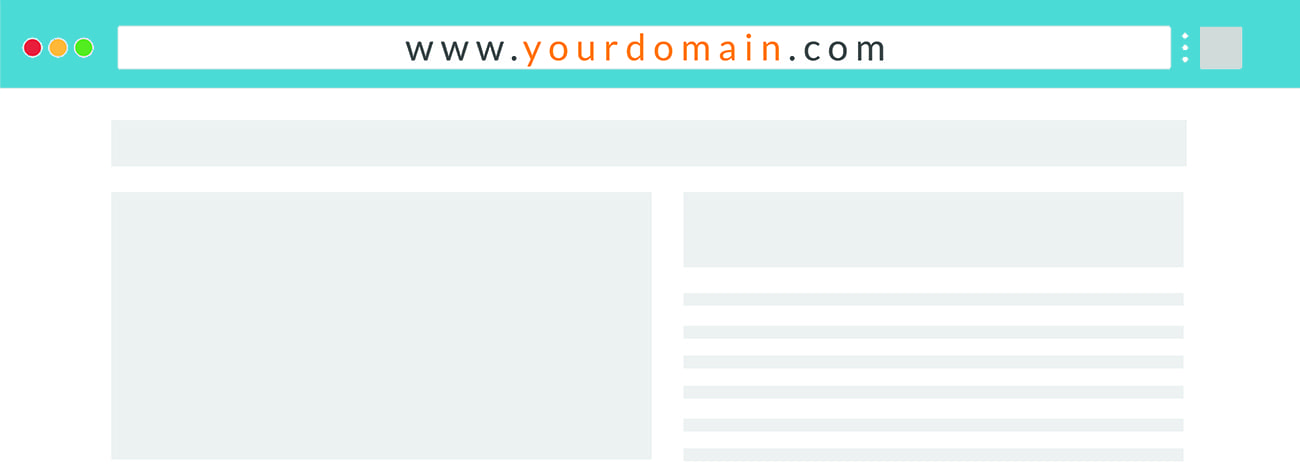7 steps to starting your website or WordPress blog!
You’ve created a new product, mastered a niche service, or had an extraordinary epiphany, and you’d like to share it with the world. This is the opportunity a WordPress site or blog can provide– a voice and a platform on which to share your ideas. No need to keep your amazingness hidden away. Make it available for all to enjoy! But, be sure that your online presence does your service, product, or writing justice. And doing so takes a bit of WordPress know-how.
7 steps to starting your website or WordPress blog!

#1. Picking a domain name
We recommend using GoDaddy for this foundational step. With this tool, you can create a name for your site that is based on where you are, what you’re doing, and how you’re doing it. From there, you can search your desired domain name to check its availability.
1. With each search, you’ll notice an array of domain suffixes (.com, .net, .org, etc.). And though their differences may appear minor, be sure that you obtain a domain name ending in .com. While Google will rate your .com and .net just the same, user perception will not. It is a common belief that .com sites have more authority– as if they had first dibs on an idea. Though there was a time in which we thought vanity suffixes were going to take over, and in some niche spaces, they have, it is wise to stick with .com
2. Prioritize using your business’s name for your domain. If your company’s title contains a buzz word or two that can briefly explain what you do, we recommend just using that! For example, the business name “Creative 7 Designs” suggests that its services include design work. And so, this title can serve as a clear and easy-to-find domain name. Simple enough, huh? We’ll even suggest not using words besides those of your business name so as not to confuse visitor’s Google searches.
3. Avoid stop words. While there is no list of clear-cut, forbidden words, stop words, like “the,” should be left out of your domain name. Stop words are typically the most common words in a language and are programmed to be avoided by search engines like Google. So, if your domain starts with “the,” your chances of being found in a visitor’s search are compromised.
4. Keep it short, sweet, and spellable. You want your domain name to be memorable and easily recognized, so keep a careful eye on its word count. And if your business name is on the long side, consider trimming it down for the domain. Finally, choose words that are easy to spell because let’s face it; either spell-check or third grade failed us miserably, and spelling is not everyone’s forte. Refrain from any words like ‘tsunami,’ ‘onomatomania,’ or ‘acquiesce,’ and you’ll be in the clear.

#2. Create and gather all of your written and image content

#3. Choose a reputable website hosting service
Not all website hosts are created equal. It used to be, back in the stone age of consoles, floppy disks, and dinosaurs, that picking a host was reasonably easy to do. There was not a lot of concern for site speed and other performance measures. But now, your site’s speed and other elements like its level of security is critical to its success. So today, do not pick just any host. It is imperative that you choose the right host. We at MyUnlimitedWP offer an individually dedicated hosting website solution wherein every website has its own dedicated server. This will guarantee optimized website speed and a seamless solution to your hosting needs. However, if you decide to take the DIY route, we can also recommend a few good solutions.
Website hosting services we like: Inmotion, Bluehost WordPress Hosting, WPengine, and Siteground. Each of these is an excellent website hosting services. However, none of these will provide your fastest solution as they do not act as a dedicated server. Rather, you’ll more likely share an optimized hosting environment. This is a low-cost option that will work relatively well, making it a great place to start.

#4. Installing WordPress
Step 1 – If you haven’t done so already, download and unzip your WordPress package.

#5. Login and general settings

#6. Selecting a WordPress theme
Once you have finalized your general settings, you have the option to choose a WordPress theme . Typically, you can opt for the default theme that comes with WordPress. And generally, we would advise against the use of specialized themes. But if you’d prefer one that is fitting to your niche field, you have several options available. Here are a few tips to consider when selecting a theme:
Step 1 – Choose a theme that is reflective of you and your business. And if it can enhance your personal and professional message in a tasteful, yet creative way, use it! If it does not promote your brand, however, stay away.
Step 2 – Refrain from using themes that have not recently been updated. These will typically break over time if they haven’t received those necessary enhancements or WordPress support. You can check the frequency of updates with WordPress update records.
Step 3 – Select a theme that has been well-tested and tried. It should be one that many people have also used. When it comes to themes, get on the bandwagon.

#7. Creating WordPress website pages
Your site’s pages will compose its structure. And so knowing the outline and flow of these is an essential step before adding in your prepared content. To make pages, go into the backend of your website, to the pages tab, and add a new page. Upon completing your page structure and menu, you can begin to input the wonderful text and image content you made earlier. You can use the internal WordPress builder called Gutenberg or one of the other great page builders such as Elementor, Visual Composer, Divi, and Oxygen.


